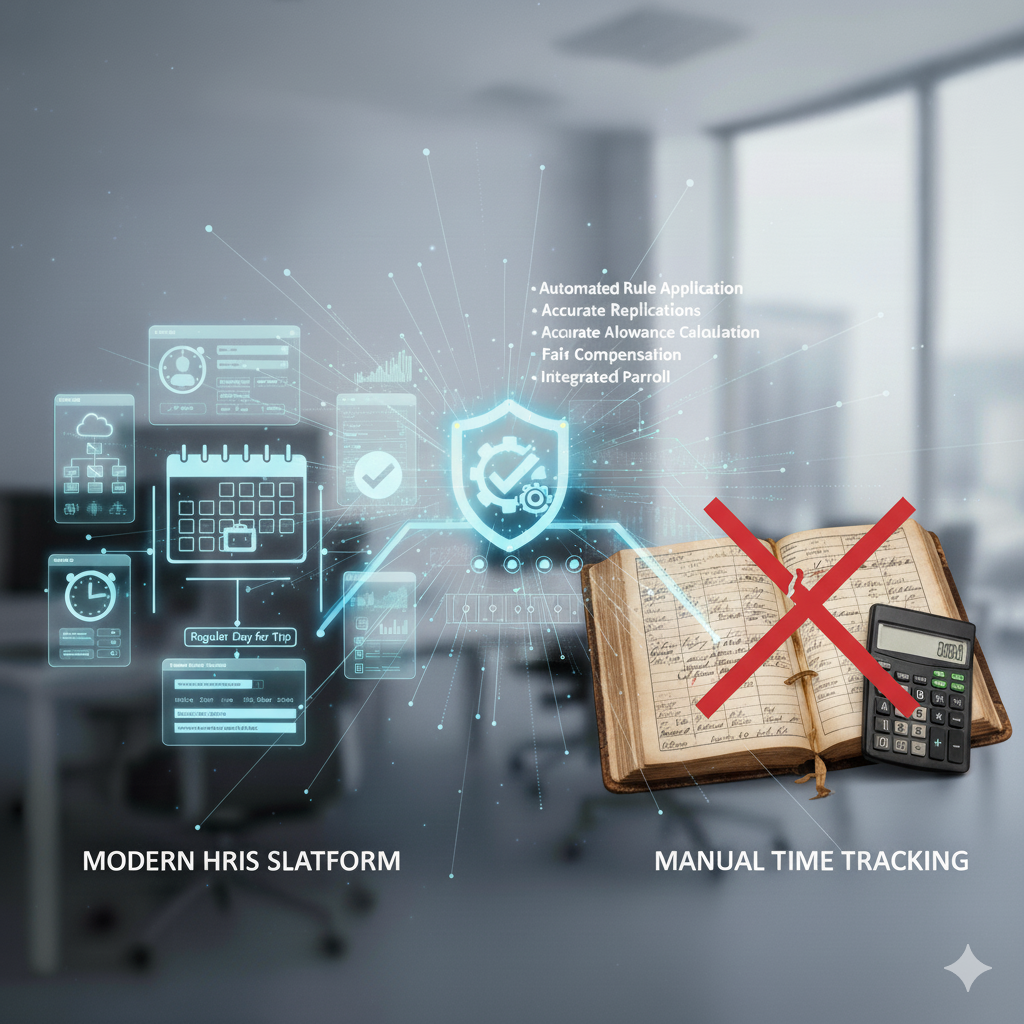Address
Kaypian, San Jose Del Monte City, Bulacan Philippines
Work Hours
Monday to Friday: 8AM - 6PM
Weekend: 10AM - 5PM
Address
Kaypian, San Jose Del Monte City, Bulacan Philippines
Work Hours
Monday to Friday: 8AM - 6PM
Weekend: 10AM - 5PM


Integrated HR. Accurate Payroll.


Integrated HR. Accurate Payroll.

In today’s fast-moving business landscape, not all work happens within standard schedules. Many employees — especially those assigned to out-of-town projects, site visits, or business trips — work on what would normally be their rest days.
In such cases, HR must ensure that rest days per trip are correctly recognized as regular working days, especially when trip allowances or travel compensations are involved.
Manual handling of these scenarios can lead to payroll errors, disputes, and compliance issues. Thankfully, modern Human Resource Information Systems (HRIS) provide the tools needed to automate and accurately manage these unique work conditions.
A rest day per trip occurs when an employee is required to travel, attend meetings, or perform job duties on what is officially their day off.
Traditionally, HR departments handled this manually — adjusting schedules, logging the day as a regular working day, and adding trip allowances. But this process is:
With HRIS automation, all of this can now be done seamlessly, accurately, and transparently.
Modern HRIS systems can automatically detect rest days with recorded work hours or travel logs.
Once identified, the system:
This automation ensures consistency and eliminates the need for manual updates or HR intervention.
Every company has unique rules for travel pay and rest-day assignments.
HRIS platforms allow HR admins to configure custom rules such as:
This flexibility ensures compliance with both company policy and local labor laws, while maintaining payroll accuracy.
An HRIS doesn’t just track attendance — it integrates trip management features as well.
When an employee files a trip request or fieldwork schedule, the system automatically:
This integration creates a single source of truth, connecting attendance, travel, and compensation in one automated flow.
One of the most powerful benefits of HRIS is its ability to automatically compute trip allowances.
Once a trip request is approved and linked to a rest day, the system:
No more manual spreadsheets or cross-checking between HR and finance — everything is seamlessly synced.
After identifying which rest days qualify as regular working days, the HRIS automatically sends the updated data to the payroll module.
This ensures that:
The end result is error-free payroll processing that’s fair to employees and compliant with policy.
Modern HRIS platforms often include employee self-service portals, where employees can:
This level of transparency helps prevent confusion or disputes, empowering employees to verify their own records anytime.
HR managers can access real-time dashboards to monitor:
This data provides valuable insights into workforce mobility, allowing companies to plan better travel budgets and manage resources efficiently.
Labor regulations often require companies to document all compensable work, including activities performed during rest days.
HRIS automatically generates:
This documentation supports compliance with labor standards and simplifies both internal and external audits.
By automating rest-day processing for trip allowances, HR teams can focus more on strategy and less on manual computation.
Key benefits include:
Accuracy and efficiency go hand in hand — and HRIS ensures both.
Handling rest days that fall during business trips used to be a tedious process. But with HRIS tools, companies can now:
This smart timekeeping and compensation process guarantees that employees are fairly compensated, HR operations are more efficient, and payroll remains accurate and transparent.
In short, HRIS turns complex rest-day scenarios into a simple, automated, and error-free process.